SAS Urban Survival Handbook (19 page)
Read SAS Urban Survival Handbook Online
Authors: John Wiseman
Tags: #Health & Fitness, #Reference, #Survival, #Fiction, #Safety, #Self-Help, #Personal & Practical Guides, #General, #Survival Skills

Steps up and down, especially shallow ones, are a frequent site for falls, as are changes in width of the treads of stairs (when the stairs turn a corner). Though interior decoration usually seeks to unify a space, this is a case for different treatments of the surface to make the change more noticeable. Good lighting is essential in all such situations.
SUFFOCATION
 Plastic bags, wrappings, clear kitchen film and even uninflated balloons commonly cause suffocation. Plastic bags are convenient and reusable—so less wasteful of energy than paper if you get a lot of use out of them—but punch a hole or two in them as air vents, just in case a child sticks its head inside. Most products today are overwrapped—thin plastic films can easily suffocate if placed over the face.
Plastic bags, wrappings, clear kitchen film and even uninflated balloons commonly cause suffocation. Plastic bags are convenient and reusable—so less wasteful of energy than paper if you get a lot of use out of them—but punch a hole or two in them as air vents, just in case a child sticks its head inside. Most products today are overwrapped—thin plastic films can easily suffocate if placed over the face.
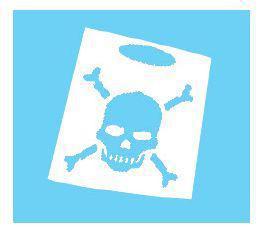
SAVE A LIFE!
SUFFOCATION
Remove cause—if it is a plastic bag, tear it away from the mouth and nose. If breathing has stopped or is very weak, apply artificial respiration. If heartbeat has stopped, apply cardiac compression. DON’T give up if suffocation has just occurred. Seek urgent medical attention.
For choking see SAVE A LIFE!: Choking (next page).
Dispose of them as soon as possible. Tell suppliers you don’t need their wrappings! Make sure a child doesn’t raid the waste bins!
It’s not necessary to cover the whole head to cause suffocation. Plastic films may be sucked into the mouth, small objects can easily block a windpipe. Never let young children play with small or breakable toys—and choose sweets carefully. Even peanuts are dangerous to young children.
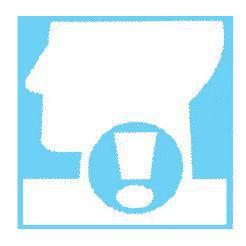
SAVE A LIFE!
CHOKING
If you believe that there is a blockage in the windpipe, you must act quickly. Remove any matter, including loose dentures (leave fixed ones), from the mouth or throat.
CHILD OR BABY
Lay the child or baby over your lap, with the head hanging downwards. Slap sharply—the younger the casualty, the gentler you should be—between the shoulder blades three to four times to dislodge the obstruction.
ADULT
Try to get casualty to sit, bending over so that head is lower than lungs. Strike sharply between the shoulder blades three to four times to dislodge the obstruction.
IF THIS DOES NOT WORK
Apply Heimlich manoeuvre/abdominal thrust.
IF BREATHING STARTS
Get casualty comfortable and reassure. Sips of water may be given.
IF UNCONSCIOUS
Place in recovery position. Seek URGENT medical assistance.
IF BREATHING DOES NOT START
Apply artificial respiration. An unconscious casualty’s throat may have relaxed sufficiently for you to get air past the obstruction into the lungs.
CALL AN AMBULANCE.
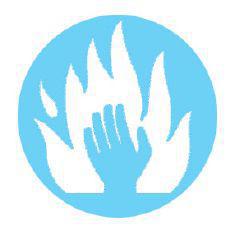
EMERGENCY!
BURNS/SCALDS
- ►
Remove the source of heat - ►
Reduce the temperature of the burn/scald in cold water Use running water, if burned by chemicals
SMALL PAINFUL BURNS
Remove jewellery and clothing in the area (in case swelling starts). When cooled, cover wound with clean material—preferably non-fluffy. Seek medical attention.
SMALL CHARRED BURN (WITH LITTLE PAIN)
Burn may be more serious, and quite deep. Cover as before. Burns must receive medical attention.
LARGER BURN—4 CM (1.5IN) ACROSS OR MORE
Treat as above.
MEDICAL ATTENTION IS URGENT
.
LARGE BURNS/SCALDS
Involving a limb, head, face, torso.
CALL
AN AMBULANCE. Lay victim down, with burnt side uppermost if at all possible.
IF UNCONSCIOUS
Place victim in recovery position.
REMEMBER
Remove jewellery and clothing which will constrict if swelling should start. DON’T try to remove clothing sticking to burns. Cover with clean dressing.
SHOCK
Most burns of any seriousness involve shock. Don’t give the shock victim anything to drink or eat. Don’t excite or move the casualty.
DON’T
Don’t touch burns or prick blisters. Don’t apply any sort of ointment or fat. Don’t use sticking plaster, coverings should be loose and fluff-free.
BURNS/SCALDS
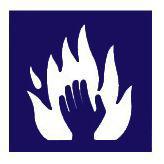 The main causes of injury are when children, especially toddlers, tip over saucepans/frying pans on cooker hobs, or when children pull kettles off work surfaces. Some sort of safety fence should be fitted round the hob. Handles should NEVER be left sticking out from the hob area, as these are a risk for adults, too. Jugs, teapots and cups of hot drink cause many injuries. NEVER drink hot drinks with a child sitting on your lap.
The main causes of injury are when children, especially toddlers, tip over saucepans/frying pans on cooker hobs, or when children pull kettles off work surfaces. Some sort of safety fence should be fitted round the hob. Handles should NEVER be left sticking out from the hob area, as these are a risk for adults, too. Jugs, teapots and cups of hot drink cause many injuries. NEVER drink hot drinks with a child sitting on your lap.
Everyone, especially children, should note how hot the external casing of ovens and cookers become. Irons and kettles, when switched off, do not cool down for some time—a child might think it’s safe to touch these. Steam from a boiling kettle can scald.
Young children should not supervise the running of their own baths. Nasty scalds could happen, quite apart from any subsequent accidents which might occur in the panic when the child realizes its mistake.
Switch off irons and move them to a safe place to cool down when you have finished using them or if the doorbell/phone rings when there are children about—or take the child with you to answer the door/phone.
FIRE
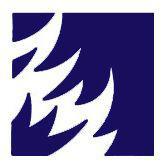 The most common cause of accidental death in the home. Nearly half of all fires are known to be started by electrical faults (see FIRE!).
The most common cause of accidental death in the home. Nearly half of all fires are known to be started by electrical faults (see FIRE!).
POISONING
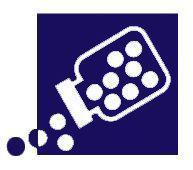 Information about chemical hazards and poisoning—their effects and how to treat them—can be found in POISONS.
Information about chemical hazards and poisoning—their effects and how to treat them—can be found in POISONS.
ELECTRICAL DANGERS
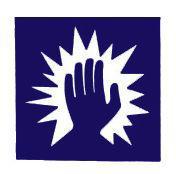 Children are inquisitive. They will stick things into empty sockets—use childproof covers. You MUST understand the risks of electricity (see
Children are inquisitive. They will stick things into empty sockets—use childproof covers. You MUST understand the risks of electricity (see
Electricity
).
